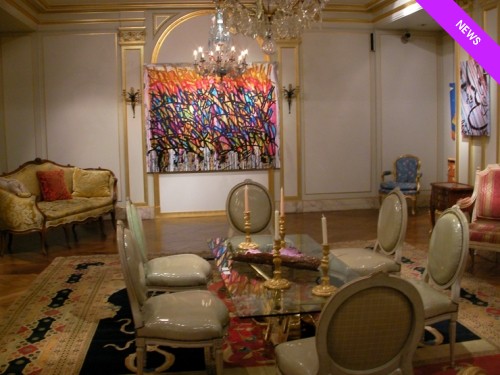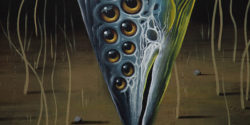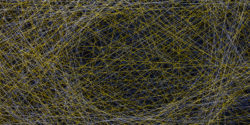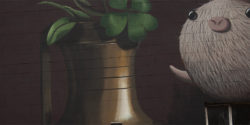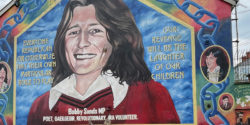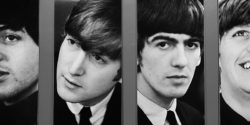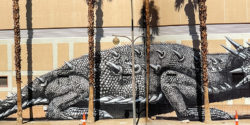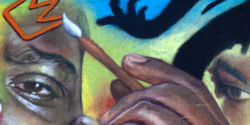“Oh, my God! We slept on our own important art movement for all these years.” – Lee Quinones
He was talking broadly about graffiti, but he might as well be talking about Street Art too. New York-based Lee Quinones is one of the most important graffiti artists – with some of his work in the collection of the Whitney Museum of American Art in New York.
Here he explains how graffiti has evolved from its early days into “something much more mature, and much more expensive.” Video Interview With Lee Quinones on BBC
Brooklyn Street Art Inteview at the “Whole In The Wall” opening in May
>>>>>>>>>>>>>>>>>>>>>>>>>>>>>>>>>>>>>>
GRL Arriving at Nuart Festival to Demo the Eyewriter Project
Yesterday the Graffiti Research Labs (GRL) arrived in Stavanger, Norway, in advance of their presentation at the Brooklyn street art celebration called the Nuart Festival.
James Powderly and Evan Roth are artists and hackers (the good kind) of technology, always looking for ways to project art without damaging property, but in new and innovative ways. This week at Nuart Festival GRL are showcasing their own works as well as the “EyeWriter” project, which is seeking to enable people who are otherwise disabled to use only the movement of their eyes to create art and communicate.
On hand Nuart special guest will be old school LA graffiti writer Tony Quan, aka Temptone, with whom the “EyeWriter” project has done experiments with the developing technology.
“The EyeWriter project is on ongoing collaborative research effort to empower people, who are suffering from ALS, with creative technologies. The project began in Los Angeles, Caifornia in 2009, when members of the GRL, FAT, OF and TEG communities teamed-up with TEMPTONE. Tony was diagnosed with ALS in 2003. The disease has left him almost completely physically paralyzed… except for his eyes.”
Day #03- KanEye Tracking from Evan Roth on Vimeo.
>>>>>>>>>>>>>>>>>>>>>>>>>>>>>>>>>>>>>>
Pedestrians & Sidewalks Urban Art Program – Check out this Open Call for Urban Artists to do a project by the WTC Site
Call for Proposals
The Port Authority of New York & New Jersey, in cooperation with NYCDOT invite artists and/or designers to propose conceptual designs for a temporary mural to be installed on the part of the construction fence surrounding the World Trade Center Site, located on Church Street between Liberty and Vesey streets in Lower Manhattan. The deadline is October 1, 2009.
Go here to learn more and download full RFP.
About the Urban Art Program
The Urban Art Program is an initiative to invigorate the City’s streetscapes with engaging temporary art installations. As part of the World Class Streets initiative, art will help foster more vibrant and attractive streets and offer the public new ways to experience New York City’s streetscapes.
>>>>>>>>>>>>>>>>>>>>>>>>>>>>>>>>>>>>>>
Street Art Shrine on Williamsburg Bridge honors DJ Josh Link
A not uncommon sight in New York is the street-side shrine, a public and very personal outpouring of grief for a loved one who lost their life due to an accident on the streets. Currently on the pedestrian walkway of the Williamsburg Bridge between Manhattan and Brooklyn an impromptu tribute is sprayed on a city plaque, a photo taped to it, flowers laid nearby, and candles are kept alight. While not art for it’s own sake, these displays have a powerful way to symbolize love, grief, and tribute… while the traffic continues to rumble by.
On August 24 well known DJ Josh Link was hit by a black car on the Williamsburg Bridge while riding his Vespa, and the accident was fatal. According to news reports, he was knocked from his ride and died as a result.
A very poignant observation can be found here by a person who discovered the accident.
Sadly and ironically, graffiti had just begun to appear around town paying tribute to another New York DJ saying, “R.I.P. DJ AM”, who died 4 days later, reportedly of a drug overdose.
 BROOKLYN STREET ART LOVES YOU MORE EVERY DAY
BROOKLYN STREET ART LOVES YOU MORE EVERY DAY


















